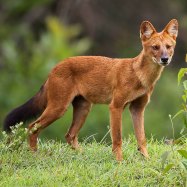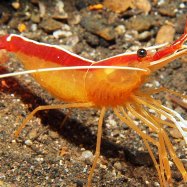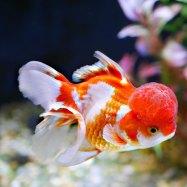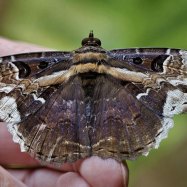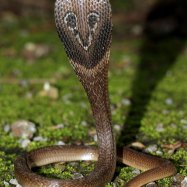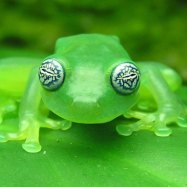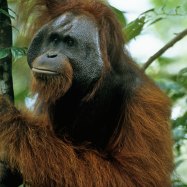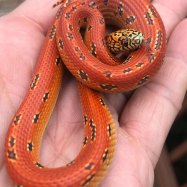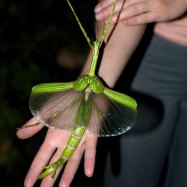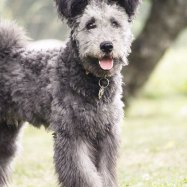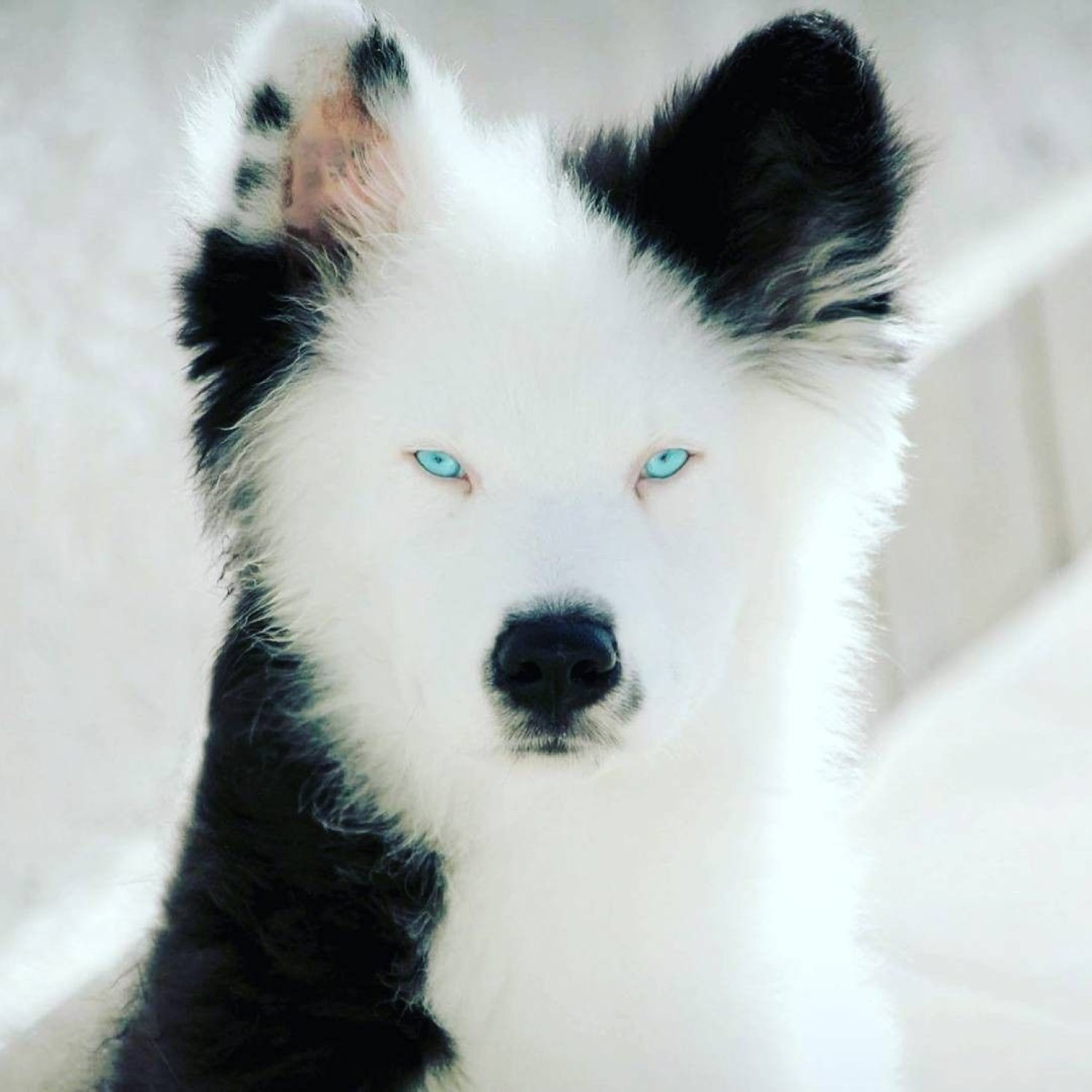
Yakutian Laika
50-63 cm (20-25 inches)
The Yakutian Laika, a medium-sized and muscular dog breed, originates from Northeastern Siberia. With a length of 50-63 cm, they are great companion dogs for active families. They are part of the Canidae family and known for their loyalty and adaptability, making them perfect for cold climates. Explore the wild side with the Yakutian Laika! #YakutianLaika #Siberia #loyaltyandadaptability #Canidae
Animal Details Summary:
Common Name: Yakutian Laika
Kingdom: Animalia
Habitat: Tundra, forest
The Majestic and Versatile Yakutian Laika: A Dog Like No Other
The animal kingdom is full of unique and extraordinary creatures, each holding their own special place in the vast ecosystem of our planet. Among these creatures, the Yakutian Laika stands out for its striking appearance, incredible adaptability, and fascinating history.Scientifically known as Canis lupus familiaris, the Yakutian Laika is a domesticated dog breed with its origins tracing back to Northeastern Siberia in Russia. Also known as the "Yakutian sled dog," it is believed to have been around for more than 500 years, thriving in the harsh and unforgiving climate of the region Yakutian Laika.
A Natural Survivor of the Tundra and Forest
The Yakutian Laika is a member of the Animalia kingdom, Chordata phylum, and Carnivora order, making it a close relative of other dog breeds such as the Siberian Husky and the Alaskan Malamute. However, unlike its relatives, this breed has not undergone significant breeding or crossbreeding, retaining its original appearance and features.Its natural habitat includes the tundra and forests of Yakutia, a region in Russia known for its subzero temperatures and challenging terrain. The Yakutian Laika's thick double coat, with a dense topcoat and a soft, warm undercoat, helps it withstand temperatures as low as -60 degrees Celsius (-76 degrees Fahrenheit).
This breed's physical attributes, such as its muscular body and medium size (measuring 50-63 cm or 20-25 inches in length and weighing between 16-25 kg or 35-55 lbs), make it well-suited for its environment. Their strong legs and nimble paws allow them to navigate through the tough terrain of the tundras and forests with ease, making them excellent sled dogs.
A Carnivorous Diet for a Strong and Capable Hunter
As a highly adaptable animal, the Yakutian Laika's diet mainly consists of small game meat, such as rabbits and squirrels, and fish from the rivers and lakes of the region. Due to its carnivorous diet, this breed has developed strong jaws and teeth, making it an efficient hunter.However, being adaptable also means that they are capable of surviving on a varied diet Yellow Crazy Ant. In the past, they often accompanied their owners, the indigenous people of Yakutia, on hunting trips, where they would consume the same food as their humans, including fish, reindeer, and other game meats.
The Proud Heritage of a Russian Breed
The Yakutian Laika has been an integral part of the lives of the indigenous people of Yakutia for centuries, playing an essential role in their daily lives. They were used for hunting, herding, and transportation, and were valued for their loyalty, hardiness, and resilience.In the 1900s, during the Soviet era, the Yakutian Laika faced a decline in population due to the introduction of motorized vehicles, which replaced their traditional use for transportation. However, thanks to the dedicated efforts of breed enthusiasts, this breed has made a remarkable comeback.
Today, the Yakutian Laika is recognized as a cultural treasure of Russia and is a source of great pride for the Yakut people. The government of Russia has taken steps to preserve and promote the breed, and it has gained popularity as a working dog, companion, and show dog in other parts of the world.
The Fascinating Features that Make the Yakutian Laika Stand Out
Beyond its remarkable adaptation abilities and rich history, the Yakutian Laika has many unique physical features that make it a fascinating and sought-after breed. Here are some standout features that make this dog breed a true masterpiece of nature.Various Colors Reflecting the Diversity of its Habitat
One of the most striking features of the Yakutian Laika is its beautiful and diverse coat colors. They come in a range of colors, including white, black, gray, and brown, with variations of these colors such as sable, cream, and red. This diversity in colors reflects the varied landscapes of the Yakutia region, where these dogs have evolved and thrived.Their thick coat not only helps them stay warm in the freezing temperatures but also serves as protection against predators. The Yakutian Laika sheds twice a year, with a significant shed in the spring and a lighter one in the fall, where they change their coat to adapt to the changing seasons.
Loyal and Intelligent Companions
Aside from their impressive physical traits, the Yakutian Laika is also known for its intelligence and loyalty. In the past, they formed bonds with their human companions and worked alongside them, making them an essential part of the community.As a result, they have developed a strong sense of loyalty, making them fiercely protective of their owners and their territories. They are also highly intelligent, with a keen sense of smell and excellent problem-solving skills, which make them suitable for various tasks, including search and rescue missions.
A Versatile Breed with a Competitive Edge
The Yakutian Laika is not just a working dog; they are also highly capable competitors in dog sports and shows. They excel in sledding, agility, obedience, and even weight-pulling competitions. Their natural athleticism, coupled with their intelligence and loyalty, makes them a favorite in various dog competitions around the world.In shows, their striking appearance, proud stance, and confident gait make them an impressive sight to behold. They have a strong and muscular build, with a broad chest and a thickly furred tail that curls over their backs, giving them an elegant and imposing appearance.
The Yakutian Laika: A Treasure Worth Preserving
The Yakutian Laika has been an integral part of the lives of the Yakut people of Russia for centuries, and it is no wonder why. This breed has proven time and again that it is a true masterpiece of nature, thriving in one of the harshest environments on the planet.But as the world continues to develop and adapt, the Yakutian Laika faces new challenges, including loss of habitat and threats from other dog breeds. It is essential to preserve this breed and its natural habitat, not only for their cultural significance but also for the valuable lessons they can teach us about adaptation and resilience.
The continued efforts of the Russian government and dedicated breed enthusiasts worldwide will ensure that the Yakutian Laika continues to thrive and capture the hearts of dog lovers everywhere. As we celebrate this remarkable breed, let us also remember to protect and appreciate the unique creatures that make our planet so diverse and beautiful.

Yakutian Laika
Animal Details Yakutian Laika - Scientific Name: Canis lupus familiaris
- Category: Animals Y
- Scientific Name: Canis lupus familiaris
- Common Name: Yakutian Laika
- Kingdom: Animalia
- Phylum: Chordata
- Class: Mammalia
- Order: Carnivora
- Family: Canidae
- Habitat: Tundra, forest
- Feeding Method: Carnivorous
- Geographical Distribution: Yakutia region in Russia
- Country of Origin: Russia
- Location: Northeastern Siberia
- Animal Coloration: Various colors including white, black, gray, and brown
- Body Shape: Medium-sized, muscular
- Length: 50-63 cm (20-25 inches)
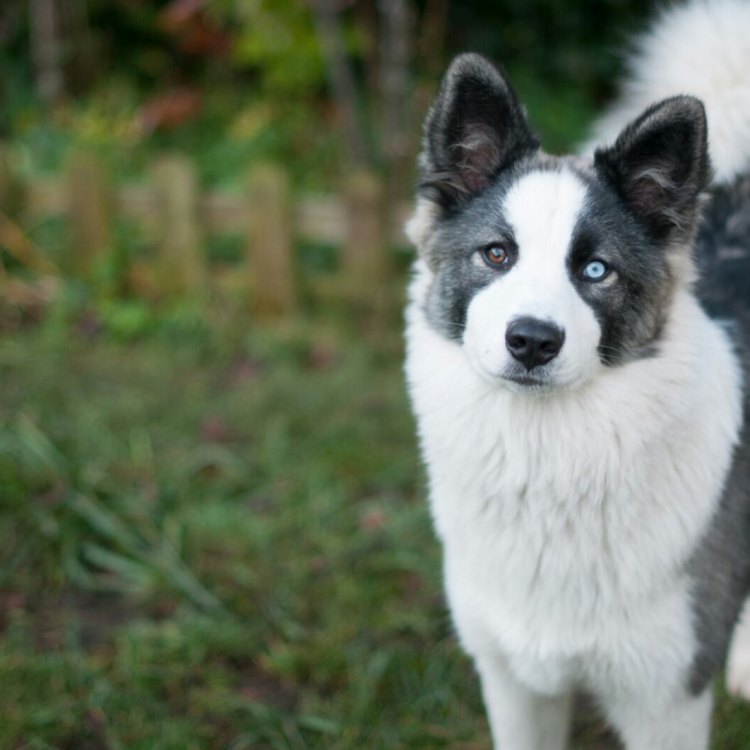
Yakutian Laika
- Adult Size: Medium to large
- Average Lifespan: 12-15 years
- Reproduction: Sexual
- Reproductive Behavior: Breeding occurs once a year
- Sound or Call: Howling
- Migration Pattern: Non-migratory
- Social Groups: Pack
- Behavior: Intelligent, active, and agile
- Threats: Hunting and trapping
- Conservation Status: Not globally threatened
- Impact on Ecosystem: Keystone predator
- Human Use: Sled dog, hunting
- Distinctive Features: Thick double coat, curled tail
- Interesting Facts: Yakutian Laikas have a strong work instinct and are excellent sled dogs. They are also known for their ability to endure severe cold temperatures.
- Predator: Wolves, bears
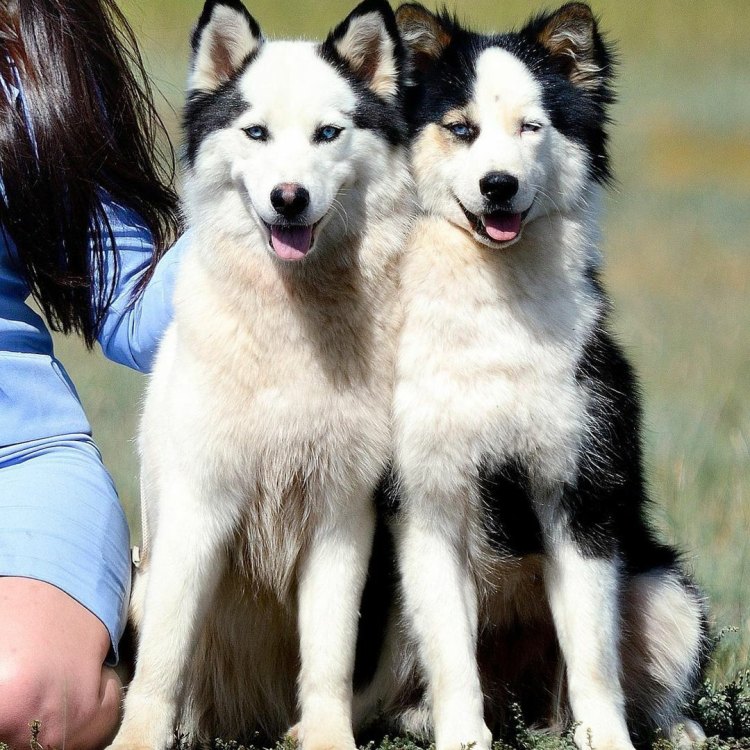
Canis lupus familiaris
The Yakutian Laika: A Hardy and Vital Member of the Arctic Ecosystem
The frigid and vast landscape of the Arctic is home to some of the most resilient and unique creatures on Earth. Among them is the Yakutian Laika, an ancient breed of dog that has been a vital part of the Arctic ecosystem and human society for centuries. This medium to large-sized dog, with its thick double coat and curled tail, is highly intelligent, active, and agile. It is known for its strong work ethic and endurance in harsh weather conditions, making it an indispensable part of Arctic life PeaceOfAnimals.Com.The Basics of the Yakutian Laika
The Yakutian Laika, also known as the Yakutian Sled Dog, is a breed that originated from northeastern Siberia, specifically the Yakutia region in Russia. This region is known for its extreme temperatures, with winter temperatures dropping to as low as -60 degrees Celsius. The Laika's ancestors were the indigenous dogs of the Yakut people, bred for their ability to withstand the harsh Arctic climate and assist in hunting and transportation.As an adult, the Yakutian Laika can range from medium-sized to large, with an average weight of 40-55 pounds. They have a thick, waterproof coat that consists of two layers – a soft undercoat and a longer protective outer coat. This double coat keeps them warm and protected from the freezing temperatures, making them well-suited for life in the Arctic.
They have an average lifespan of 12-15 years, and their reproductive behavior is similar to most dogs - sexual. Breeding occurs once a year, typically during the winter months when they are most active and have access to food. Their natural instincts as pack animals mean they tend to mate within their social group, which also acts as their family unit Yellow Fin Tuna.
Behavior and Threats
Yakutian Laikas are highly intelligent and active dogs with a strong work ethic. Historically, they were bred as sled dogs, and their endurance and strength made them perfect for this purpose. Even today, they are actively used for dog sled racing, and they excel in this sport due to their agility and speed.In their natural habitat, these dogs are keen hunters and have a strong prey drive. They can also be used for hunting game, such as reindeer, bear, and squirrels, as well as guarding livestock. Owning a Yakutian Laika requires an experienced and responsible owner who can provide enough physical and mental stimulation to keep them happy and healthy.
Unfortunately, these dogs also face threats in their environment. The Yakutian Laika, like many other indigenous animals, is hunted and trapped for its fur and meat. This practice has led to a decline in their population and put them at the risk of extinction. However, efforts are being made to preserve the breed and protect its natural habitat to ensure its survival.
The Yakutian Laika and its Role in the Ecosystem
The Yakutian Laika is considered a keystone predator, meaning it plays a crucial role in maintaining the balance of the Arctic ecosystem. These dogs are natural hunters and prey on smaller animals, such as rodents and birds, which helps control their population and protects the vegetation from overgrazing. They are also known to protect their territory and their pack from other predators, such as wolves and bears.The relationship between the Yakutian Laika and other animals in the Arctic is an essential part of the delicate ecosystem. They are a vital link in the food chain and contribute to the overall health and balance of the environment.
The Human Use of the Yakutian Laika
The Yakutian Laika has been an integral part of human society in the Arctic for centuries. Their role in assisting with hunting and transportation has been crucial for the survival of the Yakut people in this harsh environment. They are also highly valued for their work ethic and used as sled dogs, pulling heavy loads over long distances.Additionally, these dogs have also become popular as family pets, thanks to their friendly and loyal temperament. However, they require an experienced owner who understands their natural instincts and can provide proper training and socialization.
Interesting Facts
Besides their significant contributions to the Arctic ecosystem and human society, the Yakutian Laika has several intriguing and unique characteristics. For instance, they are known for their strong work instinct and ability to endure incredibly low temperatures, making them excellent sled dogs. They also have a distinctive howling call, which is their way of communicating with their pack, much like their ancestors.These dogs also have a remarkable ability to adapt and survive in extreme conditions. They were once used as a means of transportation for long distances, and they can travel up to 100 miles a day, with minimal rest breaks. Their thick double coat, curled tail, and compact build make them well-suited for traversing through deep snow and icy terrains.
The Yakutian Laika and its Predators
While the Yakutian Laika may be a keystone predator, they are not invincible. Like most animals, they have their own predators to fear in the Arctic. Wolves and bears are the primary predators of these dogs, and encounters with them can be fatal. Wolves are known to be fierce competitors, and they will not hesitate to attack a Laika if they feel threatened or if they are exploiting the same food source.However, Yakutian Laikas are known for their exceptional agility and intelligence, and they can often outrun or outsmart their predators. Nevertheless, their predators serve as a reminder of the harsh realities of the Arctic wilderness.
The Vital and Resilient Yakutian Laika
In conclusion, the Yakutian Laika is a vital and resilient member of the Arctic ecosystem. They have played a significant role in the survival of the Yakut people and continue to be a crucial part of their community. Their ability to adapt to extreme conditions and their strong work ethic make them an outstanding breed that is highly valued and respected. As we continue to learn about and appreciate these dogs, it is essential to also ensure their conservation and protection for generations to come.
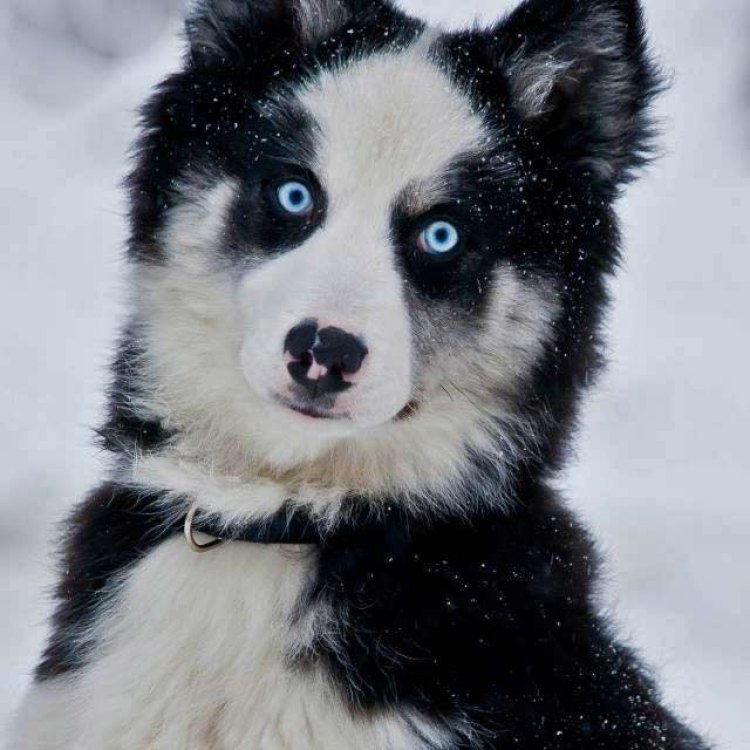
The Majestic and Versatile Yakutian Laika: A Dog Like No Other
Disclaimer: The content provided is for informational purposes only. We cannot guarantee the accuracy of the information on this page 100%. All information provided here may change without prior notice.

